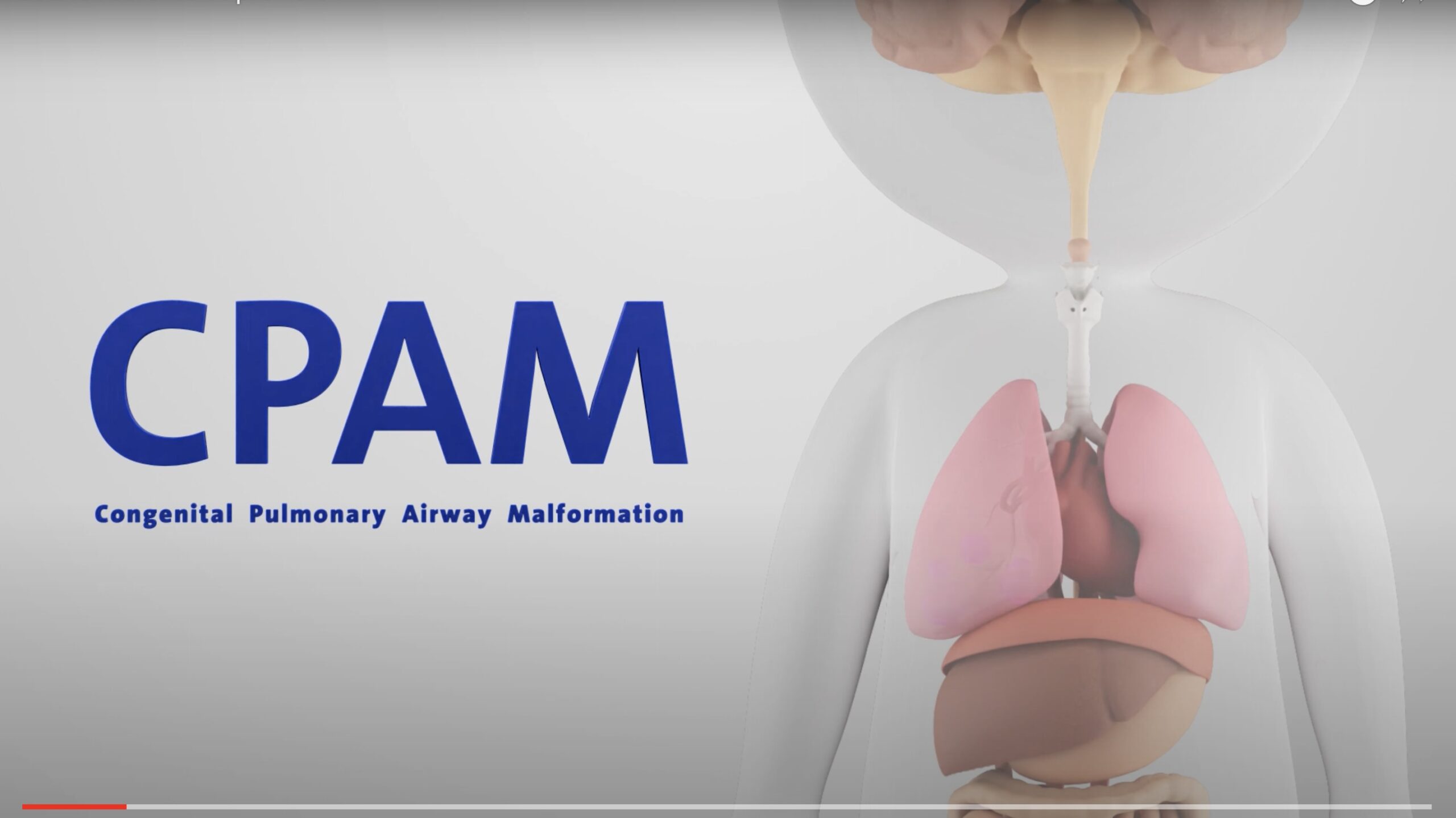Congenital Pulmonary Airway Malformation
CPAM is a rare lung disease, already present at birth. People with CPAM have air-filled or fluid-filled cavities in their lungs, called cysts. These can cause the lungs to not function normally. While some babies may experience symptoms like shortness of breath or recurring respiratory infections, most patients are symptom-free.

What is CPAM?
Diagnosis
Detection of CPAM often happens before birth through routine prenatal ultrasound screening (at 20 weeks old). However, we still don’t fully understand its causes or how it progresses.
Treatment
When symptoms show up, surgery is sometimes advised, but most CPAM cases are symptom-free in childhood. Some doctors suggest waiting and watching rather than rushing into surgery, weighing the risks of surgery complications against potential benefits. Decisions are mostly based on expert opinions and past experiences, lacking solid evidence.
FAQ
Frequently asked questions
Around 1 in 2500 babies are born with CPAM.
The cause of CPAM is unclear. Scientists are still investigating to learn more about the mechanisms behind CPAM. In a few examples, they have seen specific genes and processes that may lead to abnormal lung development. However, more research is needed to learn more about what causes CPAM.
Usually CPAM is detected during the ultrasound scan before birth. If this is not the case, a baby with CPAM can show noisy breathing or a blue color of the skin, lips and tongue, shortly after birth.

